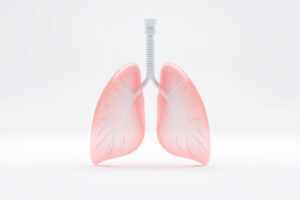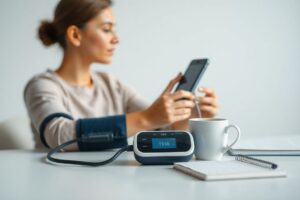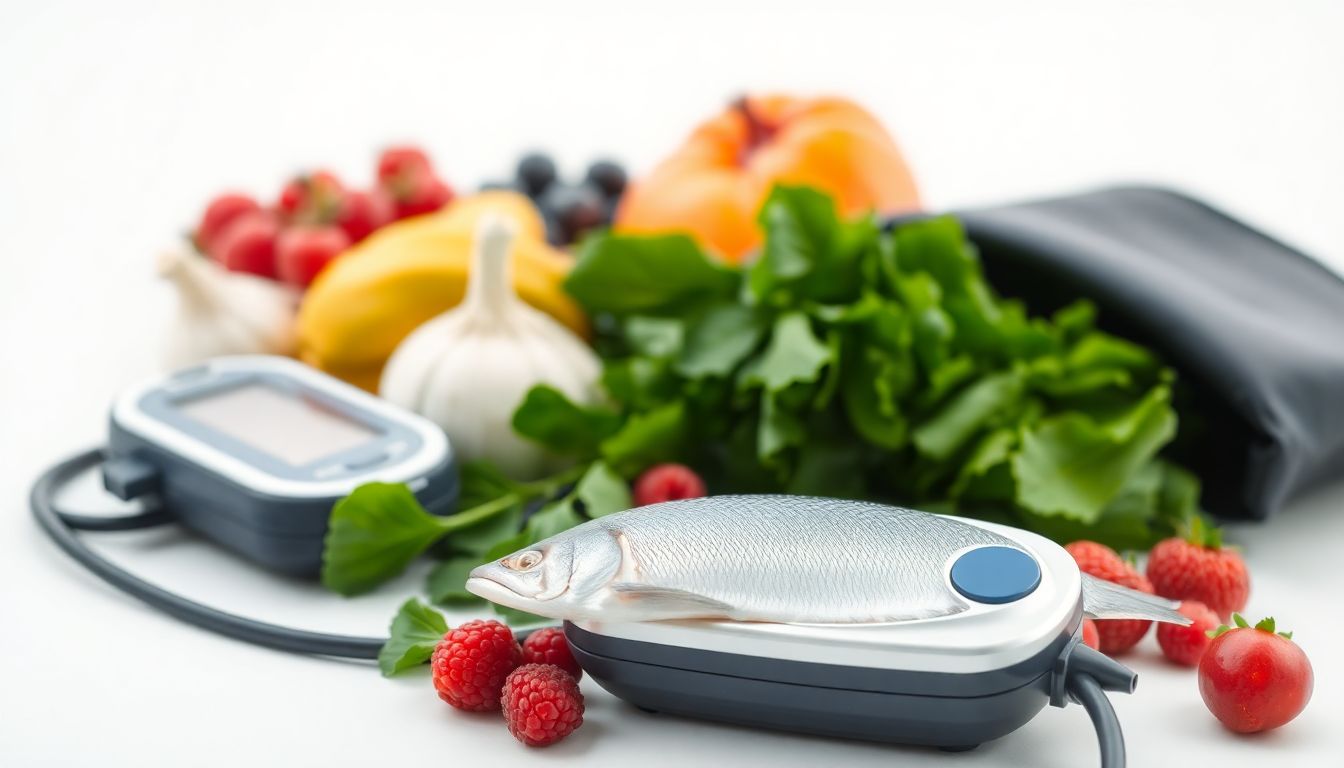Monitoring your blood pressure at home is one of the simplest and most powerful ways to protect your heart.
Regular checks help you spot rising numbers early, see which lifestyle changes work, and share reliable data with your doctor.
This guide shows you how to take accurate readings, what equipment you need, and how to understand the numbers you see.
(Related Reading: The Complete Guide to Lowering Blood Pressure Naturally)
❤️ Why Home Monitoring Matters
- Early Detection: Hypertension often has no symptoms.
- Better Control: Lets you fine-tune diet, exercise, or medication.
- Reduced “White Coat Effect”: Home readings are usually more accurate.
- Empowerment: You see progress in real time.
(Also read: What Causes High Blood Pressure? (And How to Fix It))
🩺 Step 1 — Choose the Right Blood Pressure Monitor
✅ Best Option: Automatic Upper-Arm Monitor
- Most accurate for home use
- Recommended by the American Heart Association (AHA)
- Choose a clinically validated model
⚠️ Avoid if Possible
- Wrist or finger monitors (less accurate)
- Old manual cuffs unless trained to use them
💡 Tip: Ensure the cuff fits your arm — too small gives false high numbers.
🪑 Step 2 — Prepare Properly Before Measuring
- Rest for 5 minutes in a quiet room.
- Avoid caffeine, exercise, or smoking for 30 minutes beforehand.
- Empty your bladder.
- Sit with back supported, feet flat, arm at heart level.
- Don’t talk or move during measurement.
(Also read: Morning Habits That Help Reduce High Blood Pressure)
📏 Step 3 — How to Take Your Reading
- Wrap the cuff around your bare upper arm (1 inch above elbow).
- Press start and stay still while it inflates.
- Note the two numbers: Systolic (top) and Diastolic (bottom).
- Wait 1–2 minutes and repeat; average the two results.
Take two readings in the morning (before eating) and two at night (before bed) for accuracy.
📊 Step 4 — Record Your Results
Keep a log or use a monitor app.
| Category | Systolic | Diastolic |
|---|---|---|
| Normal | < 120 | < 80 |
| Elevated | 120–129 | < 80 |
| Stage 1 Hypertension | 130–139 | 80–89 |
| Stage 2 Hypertension | ≥ 140 | ≥ 90 |
(Also read: Understanding Blood Pressure Numbers: What They Really Mean)
⚠️ Step 5 — Avoid Common Mistakes
- Measuring after exercise or stress
- Talking during test
- Crossing legs
- Wearing clothes under the cuff
- Checking only once a week
🧘 Step 6 — Interpret and Act on Your Readings
Below 120/80: Excellent — maintain current habits.
130/80–139/89: Borderline — focus on diet and exercise.
Above 140/90: Consult your doctor.
(Also read: When to See a Doctor for High Blood Pressure (Warning Signs & Next Steps))
❓ FAQs — How to Check Blood Pressure at Home
- Best time to measure? Morning and evening.
- Before or after medication? Before.
- How many times per day? Twice daily for a week initially.
- Does stress affect results? Yes — relax first.
- Are wrist monitors accurate? Usually less so.
- Numbers differ each time? Average two readings.
- How to check accuracy? Compare with your doctor’s device.
- Both arms? Yes — then use the higher arm consistently.
- Record results? Always — it reveals trends.
- Lower naturally? Yes — diet, exercise, and stress management help.
(See Best Natural Supplements to Lower Blood Pressure)
❤️ Final Thoughts
Checking your blood pressure at home is simple and life-saving when done correctly.
Choose the right monitor, prepare properly, and track consistently to stay in control of your heart health.
(Also read: The Complete Guide to Lowering Blood Pressure Naturally)












